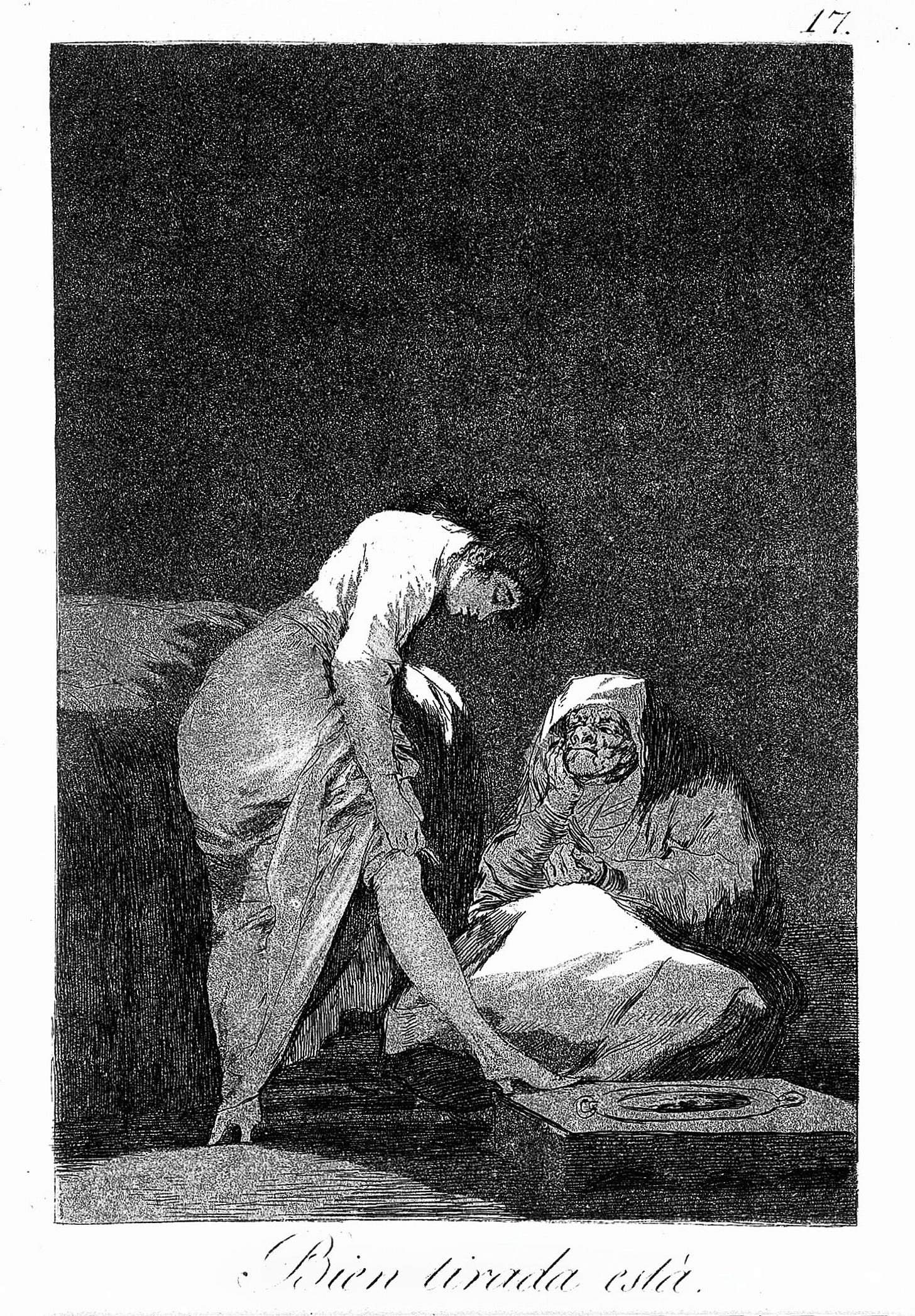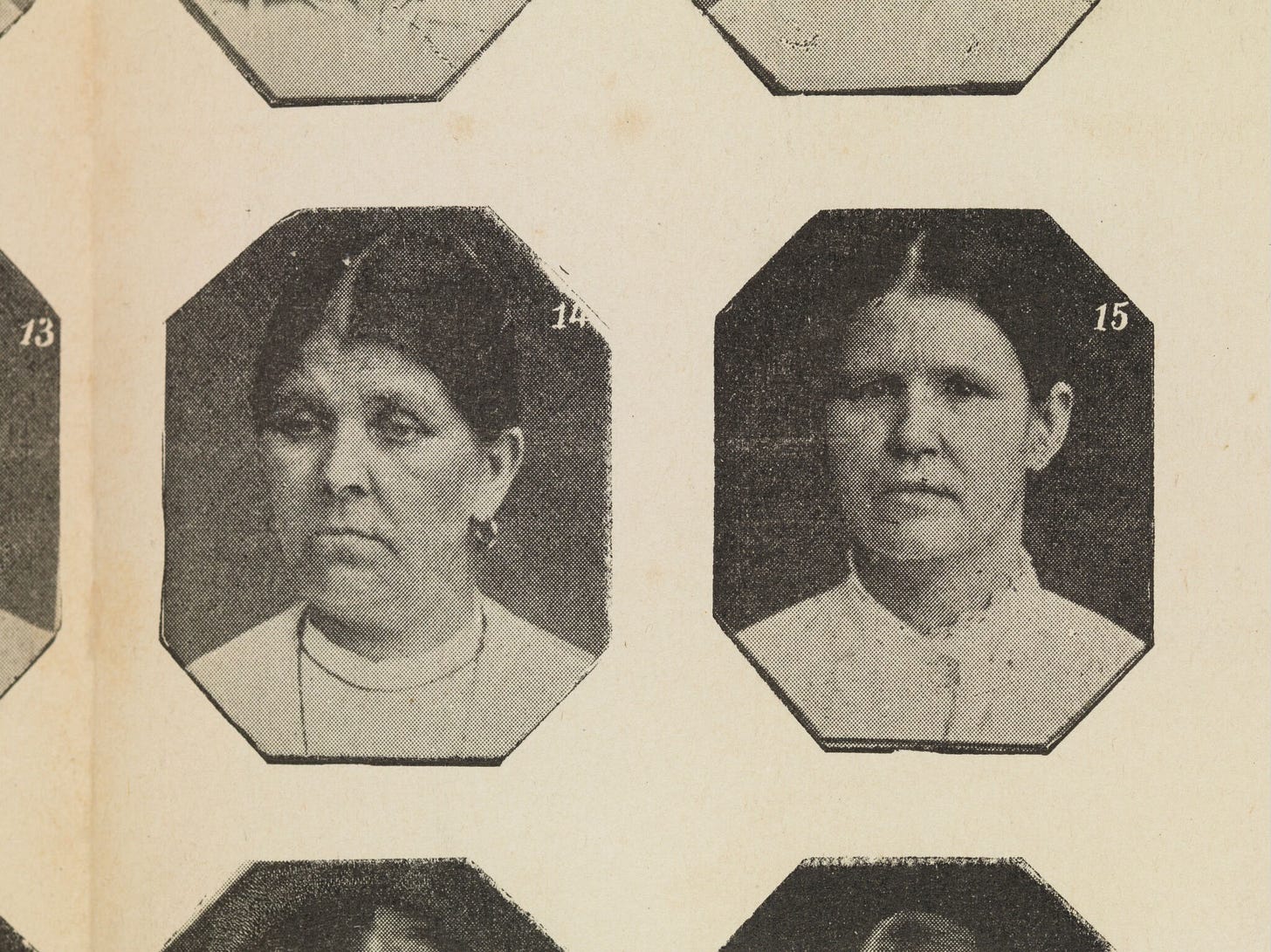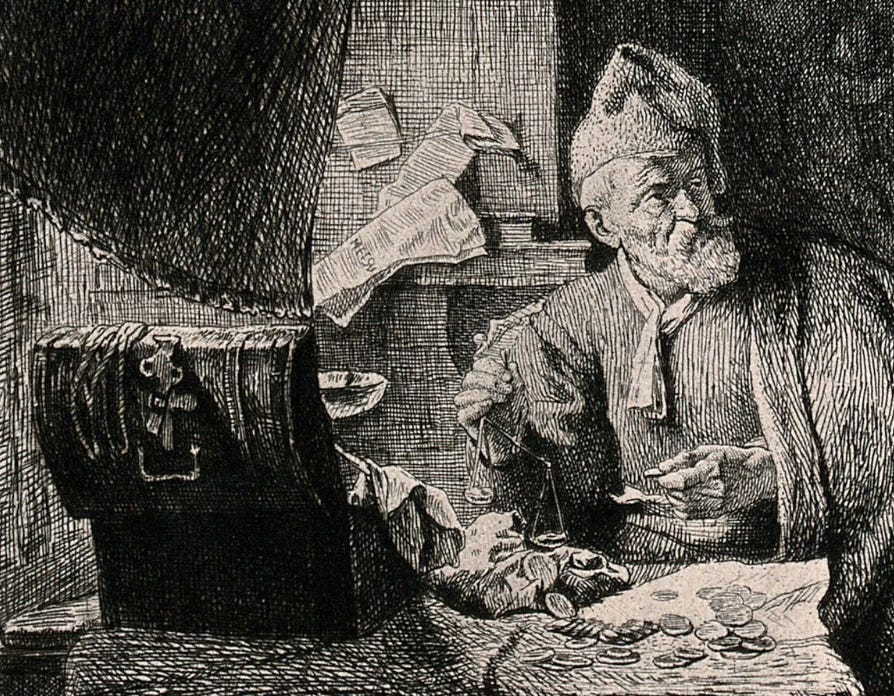Living off 'Big Emma'
Drink changed Hastings Symes from a former police officer to a hard-up private detective who lived off the earnings of his prostitute lover
Francisco Goya’s depiction of a woman becoming a prostitute (Wellcome Collection/public domain)
Census returns only give you a facade of what an individual was like. As my example today, I give you Hastings Symes. The 1901 and 1911 censuses record him living with his parents in West London; he is a private detective, and his father is a police officer. He sounds a nice, respectable man. If I also told you that Hastings himself was a former police officer, with a decade in the Metropolitan Police's L Division, there would be nothing to change your mind about him. Add to that a comment from a local builder in the West London press that there were "no more worthy people in Shepherds Bush" than Mr and Mrs Symes, you'd again think: well, that's nice, but a bit dull.
But these facts do not represent Hastings. Yes, he was from a good family, and followed his father's footsteps for years. But he also had a more unconventional private life that saw him be prosecuted for various offences between 1905 and 1913. His police career had given him ten years of unspectacular but decent work. He had appeared before the courts a couple of times as a witness, including at the Old Bailey, but by the turn of the century, he had left. He blamed an accident, and said he had left with good character, but he had also developed a drink problem.
Never mind. Hastings Symes had learned valuable skills in the police, and now he decided to put them to good use as a private detective. The censuses would suggest he was able to work as such for at least another decade - but this was not the truth. He needed money for drink; he had a peripatetic lifestyle. Although he always lived in West London, he moved around various properties, including his parents' home (I suspect they would take him in when he was at his lowest ebb, and try to get him back on the straight and narrow), but also a series of flats in houses around West Kensington, Shepherds Bush and Acton.
He also chose a girlfriend who his parents must have been shocked about. Emma Compton was a married woman, 11 years his senior. Born Emma Sarah Manning in Northampton, she was the daughter of a labourer-turned-army private-turned-police officer, and the wife of another police officer (albeit one who absconded from the Met in 1889). She was also a prostitute.
Emma had had eight children by her husband, John Compton; they had been born at yearly intervals. No census return shows John and Emma living together; although in 1891, she was at home with her children, she would lose three of them the following year. She no doubt had a hard life, and had found a means of supporting herself and her family, whilst describing herself as a caretaker or a housewife.
‘La donna delinquente: la prostituta e la donna normale’ by Cesare Lombroso (Wellcome Collection/public domain)
By 1903, Emma had moved in with Hastings, and Hastings was helping to run their flat as a brothel. Although it was mainly Emma who plied her trade from their flat, another woman would join them during the day, before sloping off to her own home in Ealing each night. Emma appears to have made a decent amount of money, and had a certain level of infamy in West London, being known as 'Big Emma' by her clients.
Their home, at 33 Wharton Road, Shepherds Bush, was becoming a bit too notorious, and in April 1905, it was staked out for a week by the police. Big Emma and her colleague were seen on several occasions taking in various men to the flat. Hastings was also seen every day wandering in and out of the property, as well as regularly walking to the local pub to bring home beer. It was noted that Hastings had lived with Emma for a couple of years and that 'he was known by several aliases'.
In May 1905, Hastings was taken to court, charged with letting his flat be used for immoral purposes. Hastings insisted he had a proper job as a private detective, and therefore had no need to let Emma use his flat for sex. It was nothing to do with him. However, when asked who he worked for, he refused to say - he didn't want a name or address being made public. This was despite the magistrate telling him that if he was in regular employment, it would 'put a different aspect on the case'. Hastings was sent to prison for a week, so that the magistrate could obtain the employer's details and communicate with him.
Four years later, in September 1909, the couple were living at 20 Davies Road in Acton Vale when they were both charged with a similar offence. Emma was charged with keeping the premises for an improper purpose, and Hastings was charged with assisting in the management of the house. His defence argued that his visits to the house could not be described as 'assisting' in anything, and the magistrates duly discharged him. Emma, however, was not so lucky. Having insisted that she was a dressmaker before admitting that she 'led an immoral life' but never took men back to the Acton Vale flat, it was found that she had a previous conviction for keeping an immoral house in Hammersmith. She was fined £20, and the police were thanked for helping to "get rid of this kind of traffic in a respectable neighbourhood".
The couple seem to have split by 1911, when Emma was in charge of her own household. By 1913, Hastings was on his uppers, and needed to find some money. He pretended he was a post office worker named Ernest Ibell, and under this name, approached a Richmond moneylender named Reginald Michaelson for a loan of £10. Reginald was strict about who he would lend to, and demanded rent receipts before turning up on Hastings' doorstep at 30 Mansell Road in Acton.
Detail from Léopold Flameng’s etching of a moneylender, after Gabriel Metsu (Wellcome Collection/public domain)
He insisted on an inspection of the property, and asked for furniture receipts. Hastings had none, but admitted that he had an existing hire purchase agreement. Reginald said he would consider the facts and then write to Hastings with his loan decision, but clearly was suspicious of the applicant. After questioning, Hastings finally came clear to the moneylender:
"I may as well tell you the truth, my name is Hastings Symes and I live at Shepherds Bush. I shan't give you any trouble. I have been in your service; I used to be a CID man."
Hastings was prosecuted for attempting to obtain £10 under false pretences. He was keen to avoid a jury trial and so asked to be tried on a summary basis before the magistrates, telling them he would plead guilty to applying for the money, but not with fraudulent intent. The magistrates refused to accept this, and eventually, Hastings said he would plead guilty to the charge. He argued that he had been out of work for some time, was "rather down and wanted a loan". He could have gone to prison for the offence, but the magistrates took pity on him, and the week he had already spent in prison on remand, and so bound him over for six months. The probation officer responsible for him asked that he be banned from drinking alcohol for that six month period.
Hastings Symes died in Hammersmith in 1925, aged just 54. His life had so much potential, but after his rather ordinary service in the police, he had squandered it. Meanwhile, 'Big Emma' continued the lifestyle the couple had practiced earlier, regularly moving round different properties in West London. The local papers show that from 1910 to 1928, she regularly appeared before the courts charged with keeping a brothel, or disorderly house. By the time of her last known prosecution, she was 68 years old (although she regularly knocked a few years off, when asked her age). She died four years later, in Hammersmith.
I may not have been able to find out much about either Hastings or Emma from their census entries - but the newspapers shed far more of a light on their work and personal lives.






